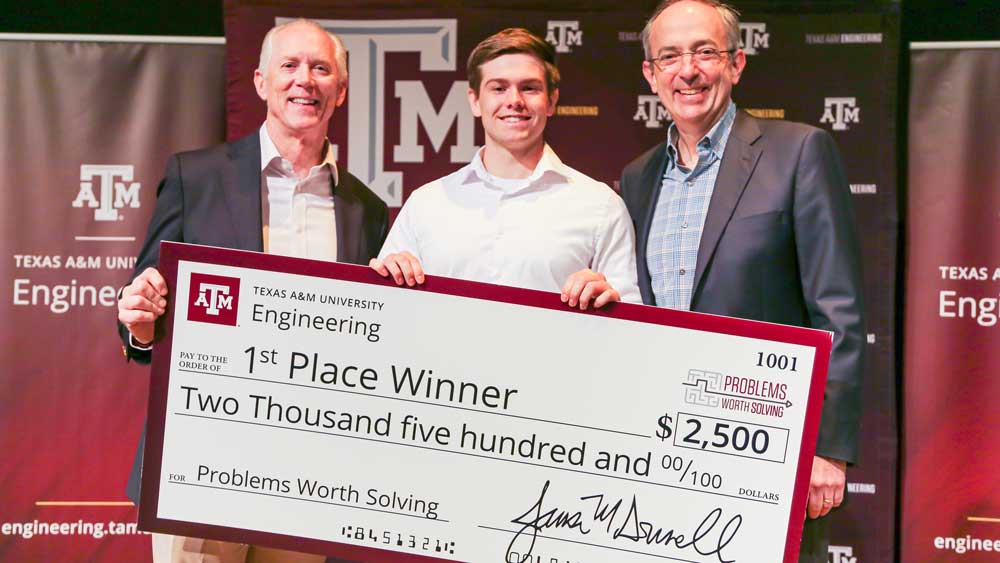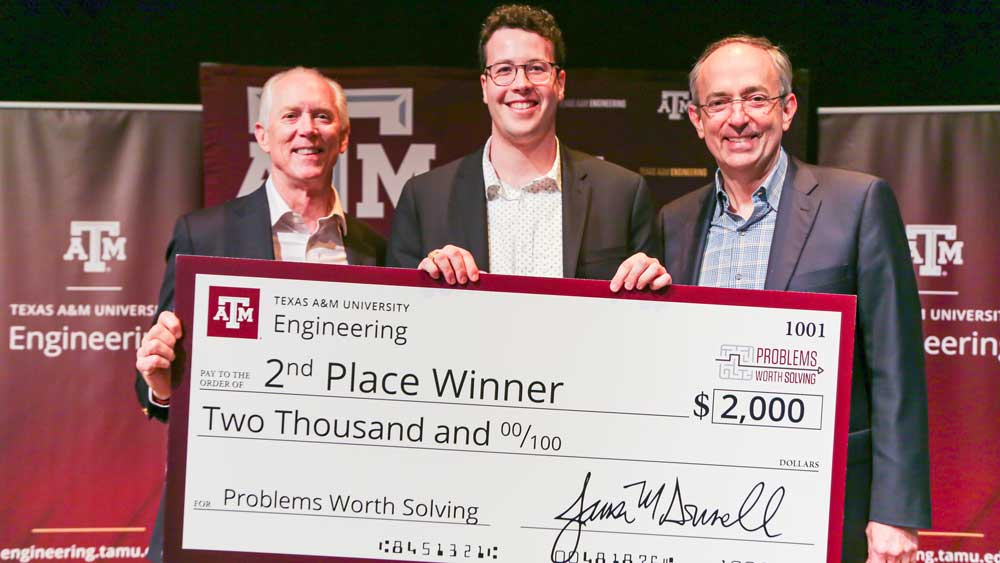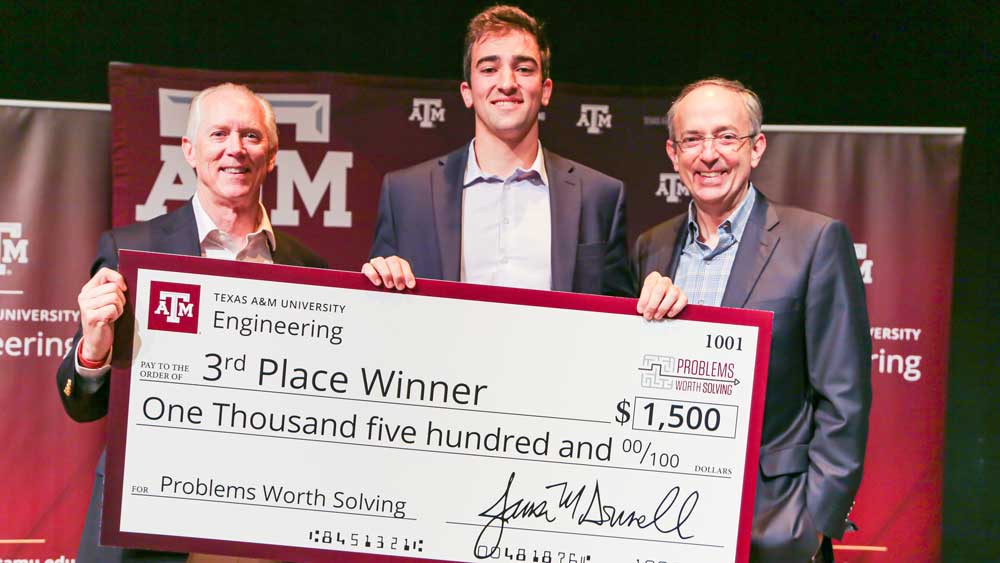
On April 22, 2023, the first-ever Problems Worth Solving pitch competition was held, hosted by the Engineering Entrepreneurship Program. The competition invited all Aggies to explore critical problems that could potentially serve as the basis for new startups or investments by an established enterprise. The competition, inspired by Steve Jobs' philosophy of starting with the customer experience and working backward towards technology, emphasized the importance of understanding customers' experiences and identifying the problems they encounter along the way.
The contest format required participants to submit an online form with short answers and a short 60-second video about their problem. Only one application per person was allowed, and only 50 out 70 entries received were accepted. The top five finalists were invited to present their problems live in front of judges at the main event of the competition with each presentation consisting of five minutes using visuals, followed by five minutes of Q&A.
The five finalists were then placed based on the judges’ deliberations. In addition to the five finalists, three honorable mentions were awarded. The winners received a cash award and an invitation to a private reception with judges at the Main Event.
Biomedical engineering student Eric Hall won first place in the competition and a $2,500 prize. The problem he pitched was about doctors (specifically cardiologists and radiologists) performing fluoroscopies, a procedure that can be used for diagnosing a health problem such as heart or intestinal disease. The doctors performing these procedures often are more prone to brain cancer because of the lack of shielding to protect them.
“I am very honored to have won this competition,” said Hall. “Chris Curran and Jim Donnell have done a great job creating something new. This problem is near and dear to me because I want to go to medical school, and I have always wanted to be a cardiologist. This issue is something I saw firsthand when I was shadowing while I prepared to go to medical school.”
In addition to receiving a $2,500 award, Hall was awarded the honor of being a guest sponsor of a 2023-24 Aggies Invent, an event that will feature the Problems Worth Solving winner's problem as the theme for the event. Hall will have the chance to present his problem, provide coaching during the event and serve as one of the event judges.

Electrical engineering student Ethan Cope was awarded second place and $2,000 for his problem about electric vehicle battery waste. As legislation has begun to push the demand for electric vehicles and car companies are making the shift, he emphasized that there are not enough systems in place to recycle these batteries.
“It is like when you get a new phone because your battery is dying,” said Cope. “This is what will happen to electric vehicles too. This competition was very interesting because most competitions focus primarily on solutions, whereas in my experience as an engineer, it is about quantifying a problem rather than having a solution right away. It shifted the focus to understanding a problem more intimately.”

Lucas Graf, an industrial and systems engineering student, was awarded $1,500 for third place. His problem focused on post-harvest grain fumigation and the resistance insects have built to pesticides, which has resulted in farmers spending more money.
“I got to develop and polish a problem I have been thinking about for a while,” said Graf. “I would love to do this competition again.”
Computer science engineering student and fourth-place winner Preston Barnett pitched his problem about the lack of electric vehicle charging infrastructure and how it can be improved upon. Barnett won $1,000.
“This was a great opportunity, and I have been able to tweak my idea of what a pitch is,” said Barnett. “Rather than presenting a solution, we are presenting the problem, which is not asked of us very much. If you come across this event in the future, I would highly recommend applying.”
Graduate student Whitney Mantooth was the fifth-place winner of the competition and won a prize of $500. Her problem focused on contractor fraud after natural disasters and the issues vulnerable people experience after something traumatic.
“I am a victim of contractor fraud,” said Mantooth. “I moved to Louisiana and saw how frequently these issues occurred because of the number of natural disasters experienced in that area. I was really excited to participate in this opportunity, and it was great to network.”
The Problems Worth Solving competition showcased the importance of understanding customers' experiences and identifying the problems they encounter along the way. By focusing on this critical part of the entrepreneurial journey, the competition provided a platform for aspiring entrepreneurs to explore new ideas and potentially launch the next great startup. It also provided an opportunity for established enterprises to invest in innovative ideas and solutions that could help drive growth and profitability. The competition was a testament to the spirit of innovation and entrepreneurship and the importance of putting customers at the forefront of the problem-solving process.